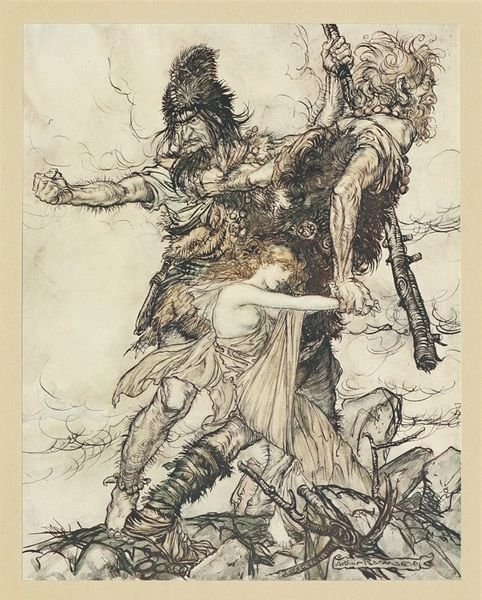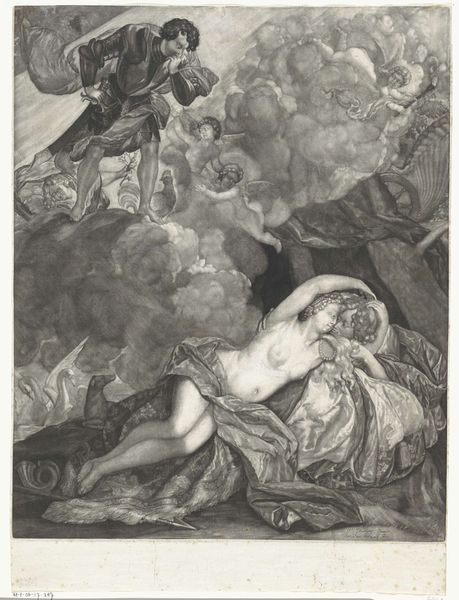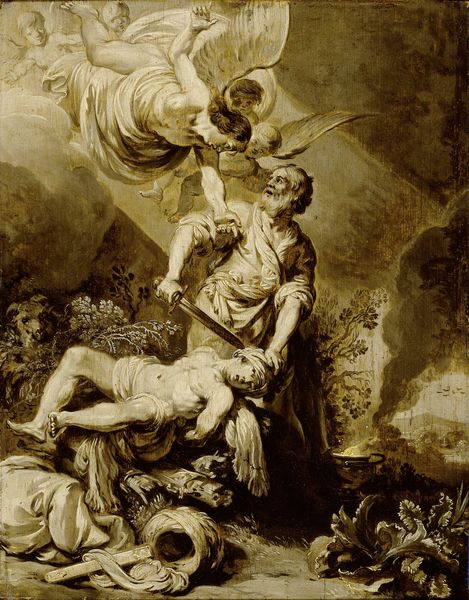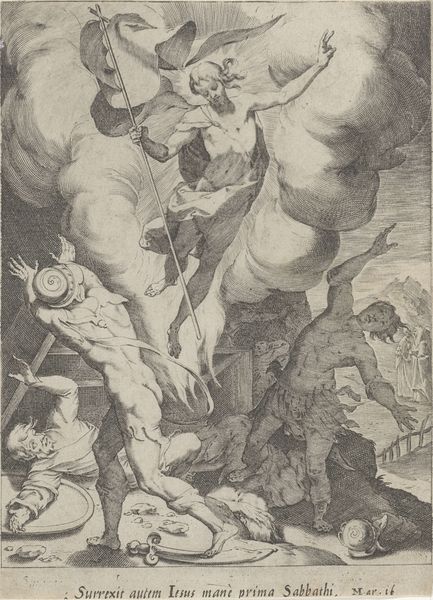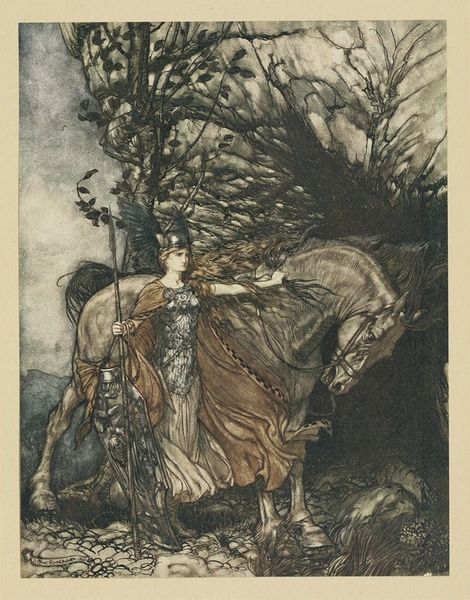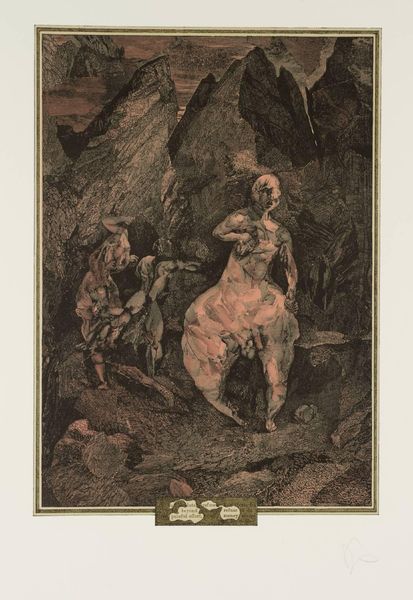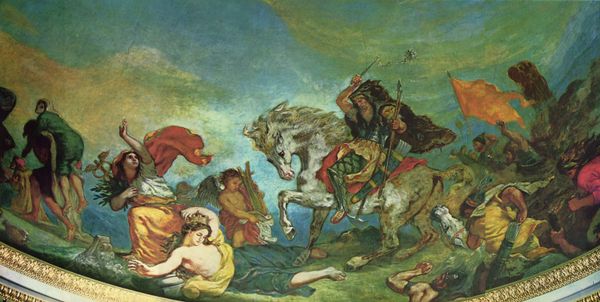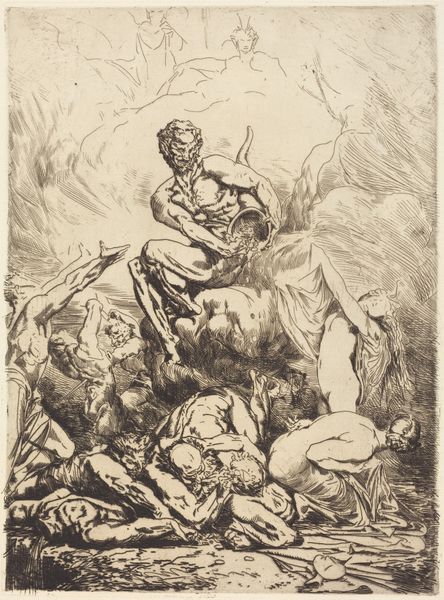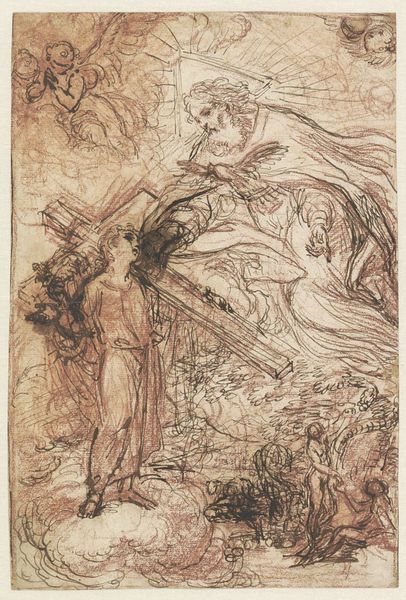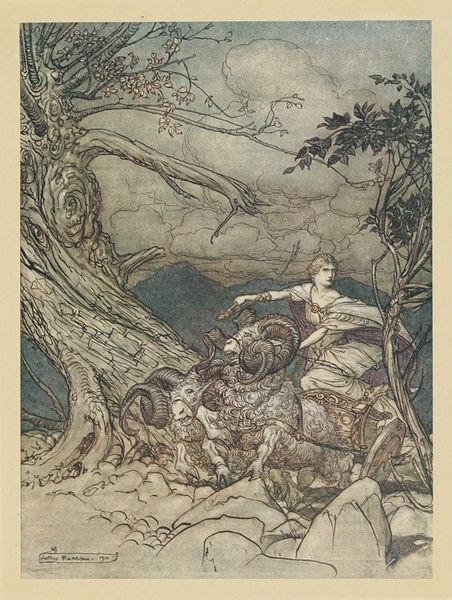
Dimensions: 97.15 x 141.5 cm
Copyright: Public domain
Curator: Gustave Moreau’s “Saint George,” painted in 1869, is quite evocative. It captures the iconic moment of the saint slaying the dragon, a potent image in Christian mythology. Editor: It certainly grabs you. The colors are so muted, almost dreamlike, which lends a strange sense of melancholy to the heroic scene. The forms are loose, barely contained, swirling in a watercolor mist... What's going on there? Curator: I believe that Moreau is exploring themes far beyond simple Christian allegory. He is tackling complex narratives of power, of gender, and perhaps even questioning the traditional notion of heroism. Consider the princess figure in the top right – she’s not just a damsel but feels imbued with an almost ethereal authority. Editor: You’re right, she seems almost… superimposed. Let's look at the Saint himself. The way Moreau handles light here is very interesting. The halo is only subtly visible, is this a departure? A subversive gesture maybe? His use of color suggests form but obscures it, pushing him towards a suggestion of symbolic import rather than literal representation. Curator: I agree. Saint George, often seen as a symbol of unwavering Christian strength, seems more vulnerable here, caught within the landscape. The slain dragon at his feet – almost anticlimactic, and the gore—disturbing but subtle — reminds us of the brutal cost of these victories. What kind of victory is this anyway? Editor: He's a beautiful boy, but perhaps that is because he, and the painting itself, are still fighting something! In this sense it's clear why the painting aligns with Romanticism; with an appreciation for both narrative, nature, and the "irrationality" of experience! Curator: Precisely. Moreau encourages us to question these familiar narratives. To consider who benefits from such heroic acts and at what cost to both the vanquished and the victor. Editor: So true. Moreau’s "Saint George" isn't just a representation of a historical event but an entry point into a much wider dialogue. Curator: Indeed. It reflects back at us our assumptions about power, morality, and even faith itself.
Comments
No comments
Be the first to comment and join the conversation on the ultimate creative platform.


